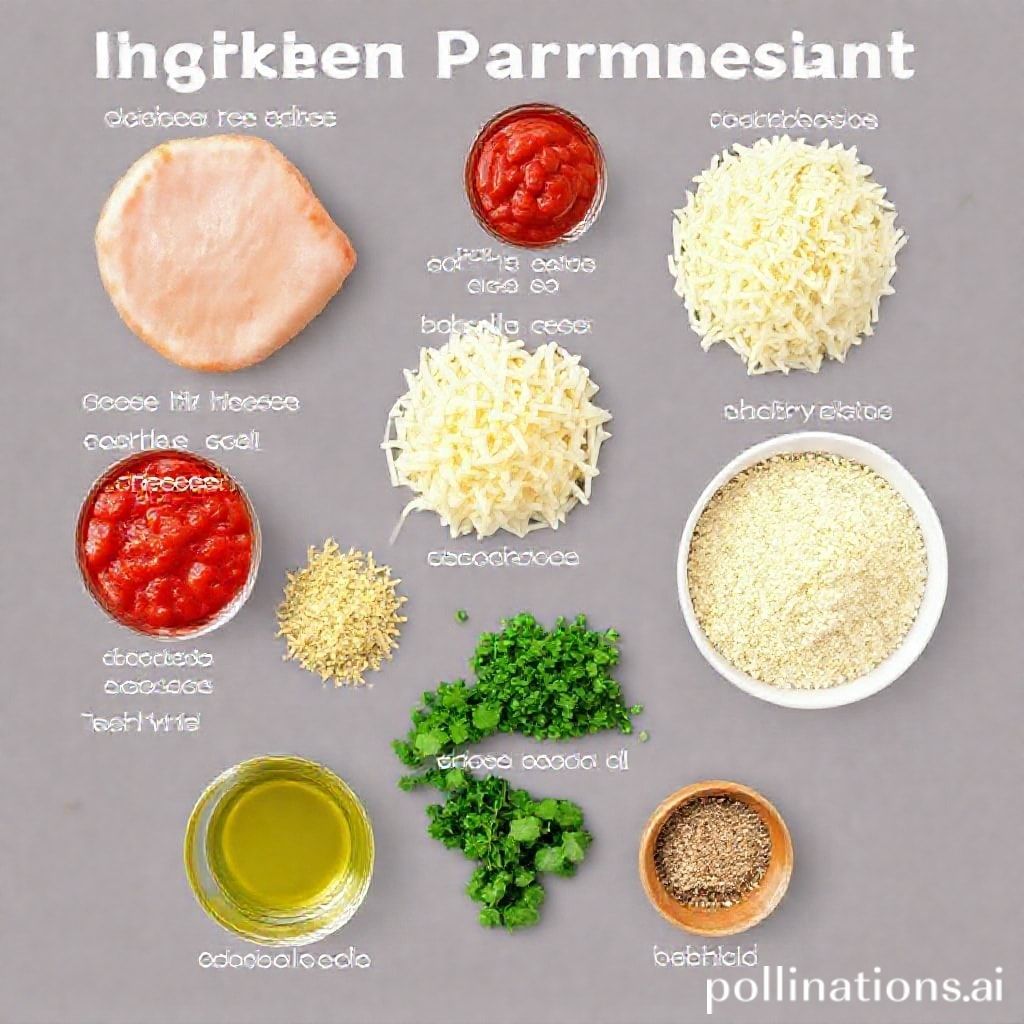Table of Contents
- Introduction
- Understanding the Key Ingredients: Chicken, Honey, and Mustard
- Step-by-Step Preparation: From Marinating to Baking
- Tips for Achieving Perfectly Baked Chicken Every Time
- Exploring Variations: Adding Vegetables and Herbs
- Pairing Suggestions: Side Dishes and Beverages
- Health Benefits of Honey Mustard Baked Chicken
- Common Mistakes to Avoid When Making Honey Mustard Baked Chicken
- Storing and Reheating Leftovers: Best Practices
- Conclusion
- Frequently Asked Questions
Introduction
Ingredients:
- 4 boneless, skinless chicken breasts
- 1/2 cup Dijon mustard
- 1/2 cup honey
- 1 tablespoon olive oil
- 2 cloves garlic, minced
- Salt and pepper to taste
Dive into an irresistibly sweet and savory culinary experience that brings excitement to your taste buds. Our Honey Mustard Baked Chicken perfectly balances the bold zestiness of Dijon mustard and the natural sweetness of honey, creating a symphony of flavors that will captivate every guest at your dinner table. With an effortless blend of ingredients that meld beautifully with tender, juicy chicken, this dish promises a memorable dining experience. Whether you’re hosting a gathering or enjoying a quiet dinner, this delectable recipe elevates any meal with grace and ease.
Understanding the Key Ingredients: Chicken, Honey, and Mustard
When preparing Honey Mustard Baked Chicken, understanding the key ingredients is crucial to achieving a dish that is both delicious and satisfying. At the heart of this recipe is the chicken, typically preferred in boneless and skinless cuts like breasts or thighs, which cook evenly and absorb flavors beautifully. Chicken’s mild taste makes it a versatile protein, easily enhanced by marinades and seasonings.
Honey is the second essential ingredient, adding a natural sweetness that balances the sharpness of mustard. Its thick consistency helps to create a glaze that clings to the chicken, contributing to a delightful caramelization during baking. Additionally, honey’s viscosity brings a rich depth, ensuring each bite is infused with sweetness.
Mustard, the third key component, introduces a tangy and slightly spicy note to the dish. The choice of mustard can vary from the mildness of yellow mustard to the robust flavors of Dijon or whole grain mustard. This ingredient cuts through the richness of the honey, creating a harmonious blend of sweet and savory flavors.
Together, chicken, honey, and mustard form a synergistic trio that results in a succulent and flavorful baked dish that is both easy to prepare and impressive to serve.
Step-by-Step Preparation: From Marinating to Baking
Preparing honey mustard baked chicken is a delightful process that infuses flavors at each step. Start by preparing your marinade with a balanced mix of honey, Dijon mustard, olive oil, minced garlic, lemon juice, and a pinch of salt and pepper. This sweet and tangy blend will create a delicious coating for your chicken.
Begin by placing the chicken pieces, preferably thighs or breasts, into a large zip-lock bag or shallow dish. Pour the marinade over the chicken, ensuring each piece is well-coated. Seal the bag or cover the dish, then refrigerate for at least an hour to allow the flavors to penetrate deeply.
When it’s time to bake, preheat your oven to 375°F (190°C). Arrange the marinated chicken pieces in a baking dish, ensuring they are not overcrowded to promote even cooking. Pour any remaining marinade over the chicken for added moisture and flavor. Cover the dish with foil and bake for 20 minutes.
Afterwards, remove the foil and continue baking for an additional 15 to 20 minutes, or until the chicken is cooked through and golden brown on top. This step ensures your chicken is juicy inside with a slightly crisp exterior. Serve warm and enjoy the delightful taste of honey mustard baked chicken.
Tips for Achieving Perfectly Baked Chicken Every Time
Achieving perfectly baked chicken every time requires attention to detail and a little culinary know-how. Here are some essential tips to help you on your journey. Firstly, selecting the right cut is crucial. Boneless, skinless chicken breasts are popular, but for more flavor, try using chicken thighs. They remain moist and have a richer flavor profile. Another key tip is seasoning. Don’t be shy with spices and herbs to enhance the chicken’s natural flavors. Salt and pepper are must-haves, but consider garlic powder, paprika, or thyme for added depth.
Preheating your oven to the proper temperature, usually around 375°F (190°C), ensures even cooking. An essential tool is a meat thermometer; chicken is safely cooked when it reaches an internal temperature of 165°F (74°C). Overcooking dries out the meat, so monitoring the internal temperature is critical. Lastly, let your chicken rest for a few minutes before serving. This allows the juices to redistribute, resulting in a more succulent bite. By following these simple guidelines, you’ll be sure to serve up tender, delicious baked chicken each and every time.
Exploring Variations: Adding Vegetables and Herbs
When it comes to honey mustard baked chicken, adding vegetables and herbs can elevate this classic dish to new culinary heights. Vegetables not only enhance the dish’s nutritional value but also infuse it with fresh flavors and vibrant colors. Consider incorporating hearty vegetables like carrots, potatoes, and broccoli, which hold up well during baking and absorb the delicious flavors of the honey mustard sauce. For a pop of color and sweetness, bell peppers or cherry tomatoes can be added alongside.
Herbs like rosemary, thyme, and parsley can further enhance the flavor profile of the dish. Rosemary pairs beautifully with chicken and provides an aromatic, earthy note, while thyme imparts a subtle lemony essence that complements the tangy mustard. Fresh parsley, added just before serving, brightens up the dish with its distinct peppery flavor.
Preparing a honey mustard baked chicken with vegetables and herbs is straightforward. Simply toss the vegetables in olive oil and your choice of herbs, then arrange them around the chicken in the baking dish. This method not only ensures the vegetables are perfectly roasted but also allows them to soak up the delectable sauce, making each bite a harmonious blend of textures and flavors.
Pairing Suggestions: Side Dishes and Beverages
Pairing the right side dishes and beverages with honey mustard baked chicken can elevate the dining experience by complementing its sweet and tangy flavors. A classic choice would be roasted vegetables. Tossing vegetables like carrots, Brussels sprouts, and potatoes in olive oil, salt, and pepper before roasting can bring out their natural sweetness, which pairs harmoniously with the honey mustard glaze.
Alternatively, a fresh green salad with a light vinaigrette can provide a refreshing contrast, balancing the richness of the chicken. Consider mixing arugula, spinach, or mixed greens with cucumbers, cherry tomatoes, and a sprinkle of feta cheese for added flavor.
For a more substantial side, wild rice or quinoa can be excellent options, offering a nutty texture that complements the smoothness of the chicken.
When it comes to beverages, a crisp white wine like Sauvignon Blanc or a light beer such as a lager can pair wonderfully, highlighting the dish’s flavors without overwhelming them. For non-alcoholic options, an iced tea infused with lemon or a sparkling water with a hint of citrus can add a refreshing touch, making the meal memorable.
Health Benefits of Honey Mustard Baked Chicken
Honey mustard baked chicken is not only a flavorful dish but also a nutritious choice that offers several health benefits. Made primarily with lean chicken breast, this dish is rich in protein which is essential for muscle growth and repair. Protein also helps maintain satiety, making it a great option for those looking to manage their weight.
The honey used in the sauce provides natural sweetness and is a source of antioxidants. These antioxidants help in reducing oxidative stress in the body, contributing to better overall health. Mustard, on the other hand, adds a unique tangy flavor while being low in calories and high in minerals like selenium and magnesium, which support metabolic function and bone health.
Baking, as a cooking method, minimizes the need for added fats, making the dish lower in calories compared to fried alternatives. Additionally, the combination of honey and mustard offers anti-inflammatory properties that may benefit heart health. Including vegetables as a side to this meal can further enhance its nutritional value, offering a well-rounded, health-conscious meal.
Overall, honey mustard baked chicken can be a delicious yet strategically healthy addition to a balanced diet, appealing to those seeking both taste and nutrition.
Common Mistakes to Avoid When Making Honey Mustard Baked Chicken
When making honey mustard baked chicken, avoiding common mistakes can dramatically enhance the flavor and texture of your dish. One key mistake is underestimating the importance of marination. Some might skip this step or cut it short, but allowing the chicken to sit in the marinade for at least an hour can make a big difference, as it enhances the flavor and tenderness of the meat.
Another pitfall is using low-quality mustard or honey. The quality of these ingredients directly impacts the final taste, so opting for authentic Dijon mustard and real honey can elevate your dish. Be cautious not to overdo the sauce either. A thick coat of sauce is tempting, but too much can overwhelm the chicken’s natural flavor and lead to excessive sugar caramelization, which may burn during baking.
Additionally, baking at the wrong temperature is another common error. Baking the chicken at too high a temperature can dry it out. Stick to a moderate temperature, around 375°F (190°C), for the best results. Lastly, neglecting to let the chicken rest once it’s baked can cause loss of juiciness, so always allow it to rest for a few minutes before serving.
Storing and Reheating Leftovers: Best Practices
When it comes to storing and reheating leftovers of your delicious honey mustard baked chicken, there are a few best practices to ensure both safety and flavor retention. First, allow the chicken to cool to room temperature before storing. This helps prevent moisture buildup, which can lead to sogginess. Once cooled, place the chicken in an airtight container to preserve its freshness and prevent any odor transfer in the fridge.
For optimal quality, consume the leftovers within 3 to 4 days. When it’s time to reheat, you can use an oven or a microwave. If using an oven, preheat it to 350°F (175°C) and place the chicken in a baking dish, covering it with foil to retain moisture. Heat for around 20 minutes or until thoroughly warmed.
If using a microwave, place the chicken on a microwave-safe plate and cover it with a microwave-safe lid or another plate to trap steam, which helps keep it moist. Heat on medium power in 1-minute intervals to ensure even reheating, flipping the pieces halfway through. These steps will help maintain the delightful taste and texture of your honey mustard baked chicken leftovers.
Conclusion
The captivating journey through crafting the perfect Honey Mustard Baked Chicken underscores the art of balancing flavors and culinary skill. By mastering the essentials, from selecting quality ingredients like chicken, honey, and mustard, to fine-tuning your baking techniques, this dish can transform any meal into a memorable dining experience.
Don’t forget to explore complementary side dishes and beverages to enhance your meal, and remember the health benefits it offers, making it a wholesome choice for your dinner table. Avoiding common pitfalls and following best practices for storage ensures that your efforts result in a delightful meal every time.
To elevate your chicken dishes beyond the realm of Honey Mustard Baked Chicken, consider expanding your culinary repertoire with The Chicken Bible: Say Goodbye to Boring Chicken with 500 Recipes for Easy Dinners, Braises, Wings, Stir-Fries, and So Much More. This comprehensive guide is your ticket to revolutionizing your chicken recipes, ensuring that every meal you create is packed with flavor and innovation. Seize the opportunity to transform your kitchen endeavors; purchase your copy today!
















